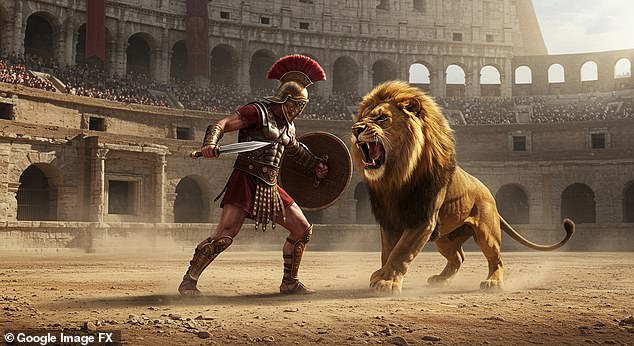
Ancient Gladiator’s Skeleton Reveals Lion Attack Death After 2,000 Years
Ancient Gladiator’s Lion Battle Revealed in York Skeleton
The epic clash between a Roman gladiator and a lion, often dramatized in films like Gladiator II, was a brutal reality 1,800 years ago. Archaeologists in York, England, have uncovered the first physical evidence of such a fight—a male skeleton bearing lion bite marks, reshaping our understanding of Roman combat spectacles.
A Gladiator’s Final Fight
The remains, discovered in York’s Driffield Terrace cemetery, belonged to a muscular man aged 26–35. His hip bone showed a fatal, unhealed bite wound matching a lion’s jaws, confirmed by comparisons with modern zoo specimens. Malin Holst, a University of York osteoarchaeologist, stated this finding confirms the site as a gladiator graveyard, not a soldier or slave burial. “This is the first osteological proof of humans battling large carnivores in Roman entertainment,” she explained.
[Image: Bite marks on the gladiator’s hip bone, with caption: Lion bite marks on the skeleton provide the first direct evidence of arena combat.]
Life and Death in the Arena
The gladiator, buried alongside two others under horse bones, endured a harsh life. Childhood malnutrition, spinal stress, and lung inflammation marked his bones. Despite surviving prior injuries, the lion’s attack proved fatal. Researchers believe he was a bestiarius—a gladiator trained to fight beasts. After death, he was ritually decapitated, a practice noted in Roman-era burials.
[Image: Excavation at Driffield Terrace, with caption: The York cemetery held 82 gladiators, revealing their diverse origins across the Roman Empire.]
York: Rome’s Northern Arena Hub
While Rome’s Colosseum symbolizes gladiatorial combat, York’s amphitheater (yet undiscovered) hosted similar spectacles until the 4th century AD. High-ranking officials, like Emperor Constantine (crowned in York in 306 AD), likely fueled demand for lavish entertainment. “These events reached far beyond Rome’s heartland,” said Prof. Tim Thompson, co-author of the study in PLOS One. The presence of lions—costly and exotic—underscores York’s status as a political and military hub.
[Image: Depiction of a gladiator vs. lion, with caption: Artistic rendering of Roman arena combat, similar to the York gladiator’s final battle.]
Gladiators: Ancient “Sports Stars”
Gladiators were valuable investments, akin to modern athletes. Owners aimed to keep them alive for repeated fights, making this individual’s death notable. David Jennings of York Archaeology noted, “This discovery reveals how these spectacles extended even to Rome’s distant frontiers.”
[Image: Russell Crowe in Gladiator, with caption: Films like Gladiator popularized arena battles, but York’s findings prove their reach beyond Rome.]
The study highlights the dark allure of Roman entertainment and York’s role in the empire’s cultural legacy. As Holst concludes, “Each bone tells a story of survival, spectacle, and sacrifice.”
Read the full study in PLOS One.
[Image: Roman Empire map, with caption: York (Eboracum) was a key Roman city, housing legions and emperors.]
Word count: ~600


